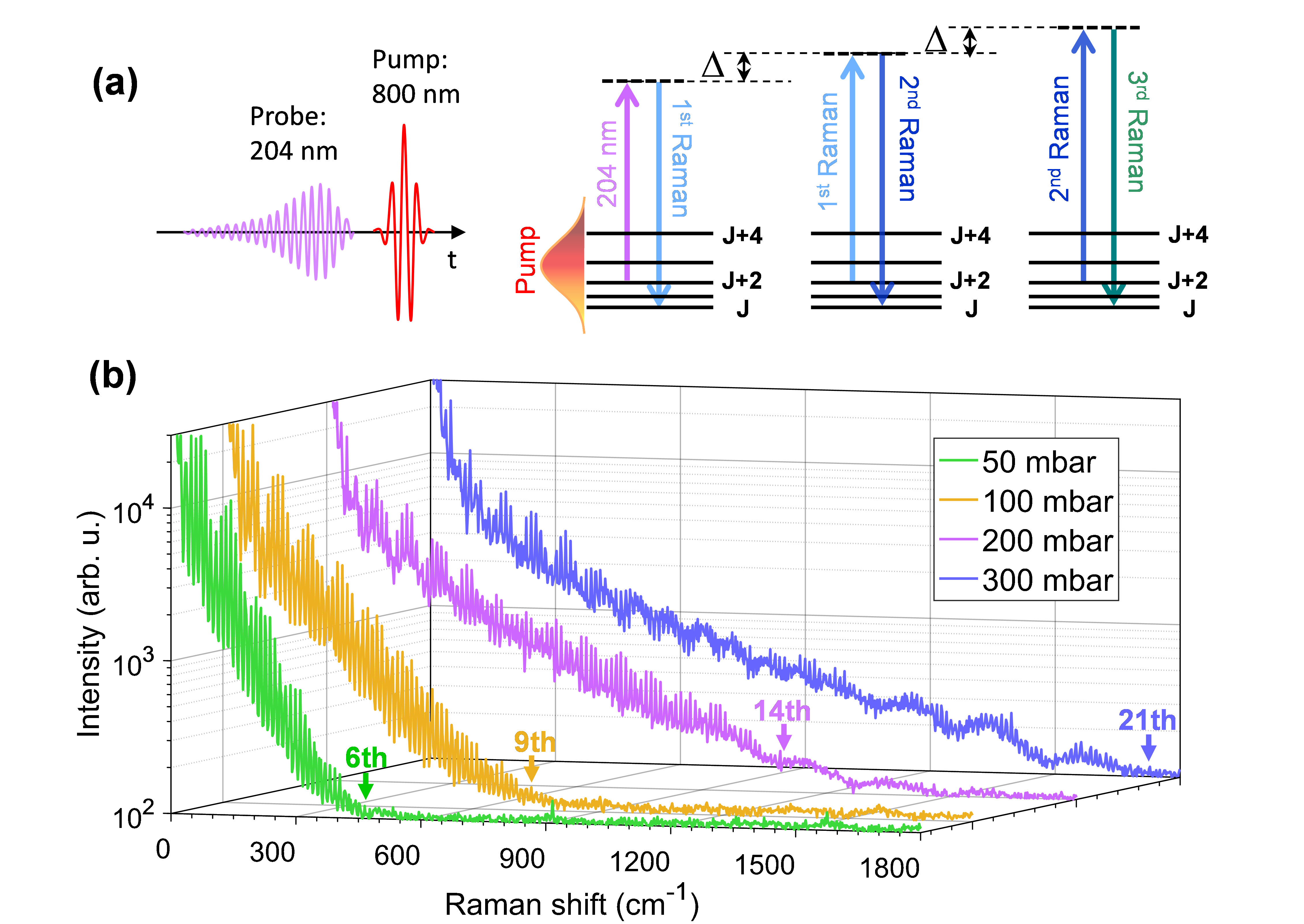Recently, researchers from Shanghai Institute of Optics and Fine Mechanics (SIOM), Chinese Academy of Sciences (CAS), have proposed a novel method for the generation of wavelength-switchable vacuum ultraviolet (VUV) and deep UV (DUV) sources using a nonlinear conversion process in strong-field-ionized molecules. The generated DUV/VUV coherent radiations exhibit unique characteristics including narrow bandwidth, switchable wavelength, and fully controllable polarization. Furthermore, the coherent radiations were used for the generation of DUV/VUV Raman comb. The results were published in New Journal of Physics on Feb. 08, 2021.
Coherent VUV (100-200 nm) and DUV (200-300 nm) light sources have been widely applied in numerous studies, such as biochemical kinetics, surface structure analysis, precision measurements, atmospheric chemistry, and nanolithography.
Until now, the generation of such light sources is still challenging and mostly relying on large facilities such as free-electron lasers. The large size, complicated structure, and high cost of these facilities limit their widespread applications. Therefore, the generation of table-top sources and the development of optical-field manipulation technologies in the DUV/VUV regime is highly desirable.
In this study, the researchers chose three electronic states of CO+ ions to construct a cascaded quantum system, and adopt NIR and violet pump pulses to realize resonant excitation among these energy states. Taking advantage of abundant vibrational energy levels of these electronic states, DUV/VUV radiations with different wavelengths can be selectively produced through resonant four-wave mixing of the two pump lasers. The polarization states of these DUV/VUV coherent radiations can be fully controlled by changing the ellipticity of the violet pump pulse.
Moreover, the combination of femtosecond impulsive excitation and picosecond DUV probe light can facilitate efficient Raman scattering to generate DUV/VUV Raman combs with more than 100 sidebands. Together with the advantages of their high spectral resolution and flexible polarization control, these coherent light sources will open a broad range of applications ranging from high-resolution spectroscopy and surface science to photochemistry and medicine, etc.
This work is supported by National Key R&D Program of China, National Natural Science Foundation of China, Strategic Priority Research Program of Chinese Academy of Sciences, Key Research Program of Frontier Sciences of Chinese Academy of Sciences, Shanghai Municipal Science and Technology Major Project, Program of Shanghai Academic Research Leader, and Youth Innovation Promotion Association of CAS.

Figure 1. (a) Energy-level diagram for generation of DUV/VUV radiations through resonant excitation. (b-d) Typical spectra and beam profiles of DUV/VUV radiations. (Image by SIOM)

Figure 2. (a) Schematic diagram for generation of Raman comb through cascaded rotational Raman scattering. (b) Raman combs recorded at different O2 gas pressures. (Image by SIOM)
Article website:
https://doi.org/10.1088/1367-2630/abde6e
Contact:
WU Xiufeng
General Administrative Office
Shanghai Institute of Optics and Fine Mechanics, CAS
Email: xfwu@siom.ac.cn
Web: http://english.siom.cas.cn/